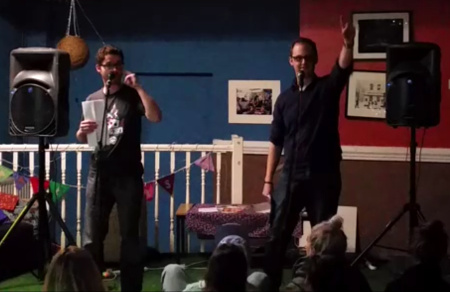The Border of the First World
Article published: Monday, September 29th 2008
As Europe seeks to close its borders to the global south, so the border of the first world itself begins to move. Hazel Healy explores.

Youssou NDour is bobbing around in the dark in a small craft off the coast of West Africa. Dont risk your life in vain. You are the future of Africa, he says to camera. The popular singer would, of course, be more likely to travel by aeroplane. But this scene comes from an advert to dissuad would-be migrants, one of a series of unwelcoming messages that Spain paid nearly £1 million to broadcast in Dakar, capital of Senegal. Dakars residents were a little offended and also unconvinced. Djibril Diagne, a 38-year-old electrician, thought that the adverts would not work. The causes of our problems are still in place. There are no answers or employment for our young people, he said. Spain presides over one of the biggest wealth disparities across borders in the world. It is seen as the gateway to Europe by the migrants from all over the African continent who make their way slowly north each year. And as Europe tries to secure its borders, the more dangerous they become. Though the humanitarian logic of Youssous ad is powerful, so too is the pull of opportunity. Poverty, ambition, repression and failing states inspire tens of thousands (not, as the media suggests, hundreds of thousands) to leave Africa every year. Spain is 15 times richer than Senegal (calculated by gdp adjusted to cost of living);Senegal, where unemployment hovers just below 50 per cent, is the number one sender country to the Iberian peninsula. At the Gibraltar Strait, Spain is a mere eight miles away from the worlds poorest continent. Migrants have come this way in a variety of crafts from surf-boards to fishing boats since visa requirements for North Africans were introduced in the early 1990s. But after Spain spent £115 million on state of the art border surveillance, the border had largely backed off south to the Spanish enclaves of Ceuta and Melilla in Morocco by 2004. After a score of deaths in 2005 on the fences, and mass deportations to Rabat, immigrants began escaping through Mauritania to Spains second maritime border, the Canary Islands, instead. Spains politicians, under pressure from northern Europe, chased the border further south. They begged, bullied and bribed African governments to sign joint policing and repatriation agreements, all the way south to Senegal, Mauritania, Gambia, Cabo Verde, Mali and Guinea Bissau. Routes from northern Africa panned out east to Malta, Scilly, Italy and Greece. Unholy alliances were formed between leaders like Berlusconi and Gadaffi, masters of blackmail, who promised to stop exporting Africans in return for the lifting of an arms embargo. Berlusconi praised the dictator as a leader of freedom and made gifts of military aid, which included 1000 body bags, while Gadaffi deported 53,800 migrants back south out of Libya in 2006, amid reports of arbitrary detentions, beatings and torture. Every time the border moves south, longer, more dangerous Atlantic routes are undertaken. Boats packed with people drift and run out of fuel, arriving as empty ghost ships as far off course as Barbados. Smugglers avoid interception and penalties for smuggling by sending overladen low-quality boats on a one-way trip, with an inexperienced migrant at the helm. Consequently significant numbers die or are injured. Some 921 people died on the Spanish frontier in 2007 and 3,500 died on the European border in total, according to a recent report by Andalusian human rights organisation APDHA. These figures represent only the bodies found. The real figures are thought to be up to three times higher. As restrictions in North Africa increase, migrants use secondary, often more dangerous routes through the desert. The number who die crossing the Sahel or Sahara is though to be even higher than those who perish at sea. Italian author Gabriele del Grande maintains a Fortress Europe Blogspot – a chilling body count, collated from press reports. He calculates just under 12,000 deaths in ten years. The grim list , updated daily, personalises anonymous migrant deaths: An unidentified young man is run over by a tour bus in Ceuta, a Somali womans body washes up on a Turkish headland, Kurdish children drown off the coast of Greece. People know the risks, but they take a gamble. The stakes are high. If you survive the perilous journey, evade detention and somehow get papers, you become the golden goose for your family or even, perhaps, an entire village. Money sent home to Senegal could equal up to 20% of its national income, according to the International Labour Organisation. Families will continue to invest in sending a member overseas. And with this amount of pressure behind you, failure is not an option. As one Moroccan migrant said: Better to die once than ten times in the eyes of your family. Migration routes change constantly. No sooner is one border secured than another opens up always further south. Nationalities change, the body count rises and the travellers get younger. The only constant is the sharp differentials in income and standard of living between Europe and Africa. It seems Youssou NDour is going to have to come up with a more compelling argument to halt the flow of migration to the first world.
More: Manchester
Comments
No comments found
The comments are closed.



